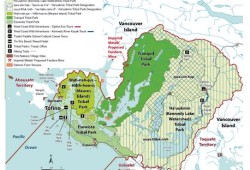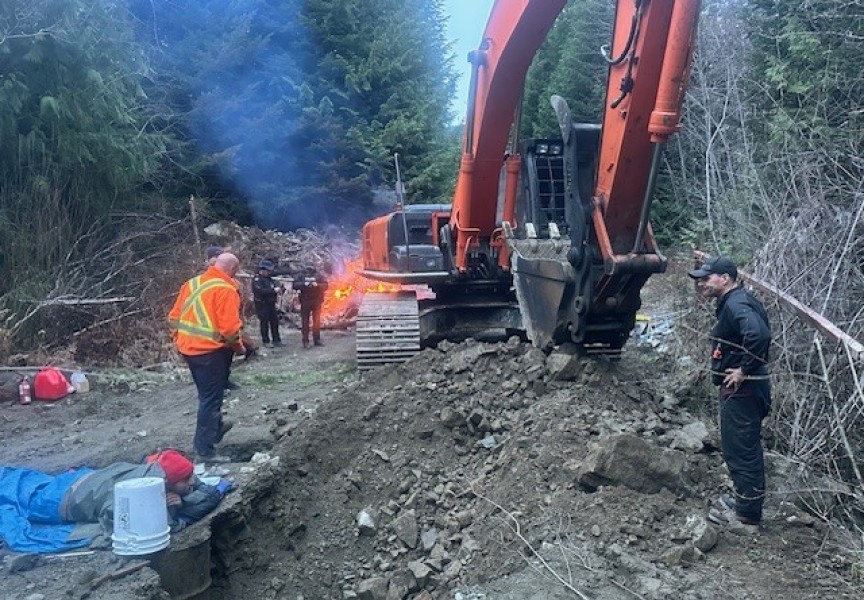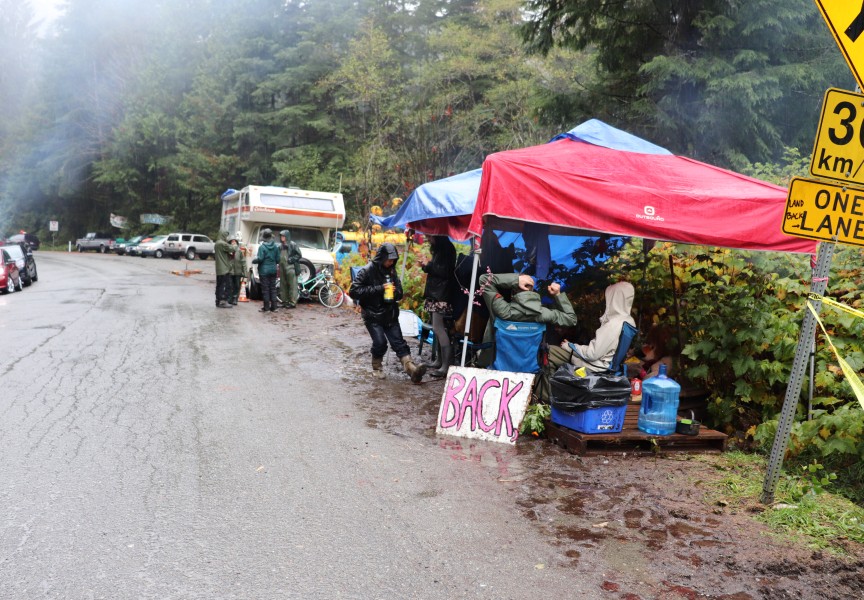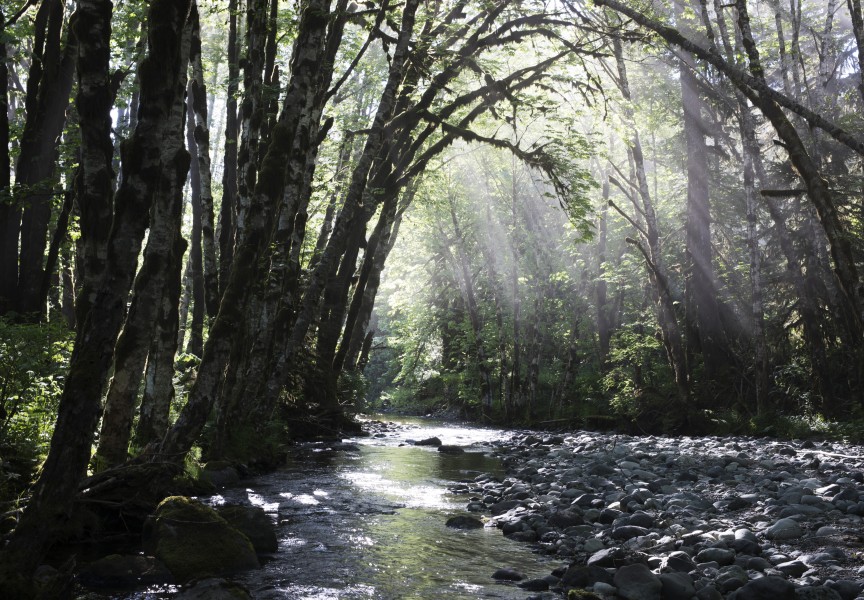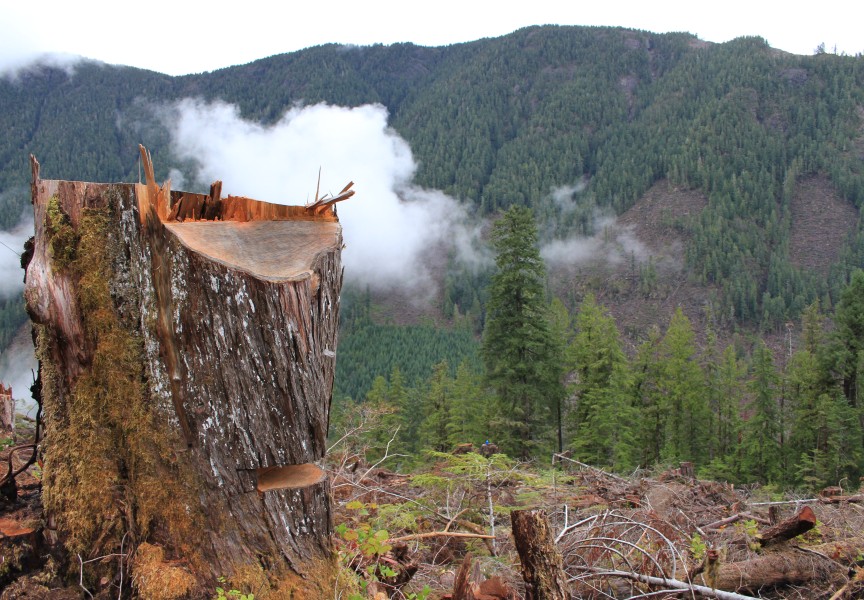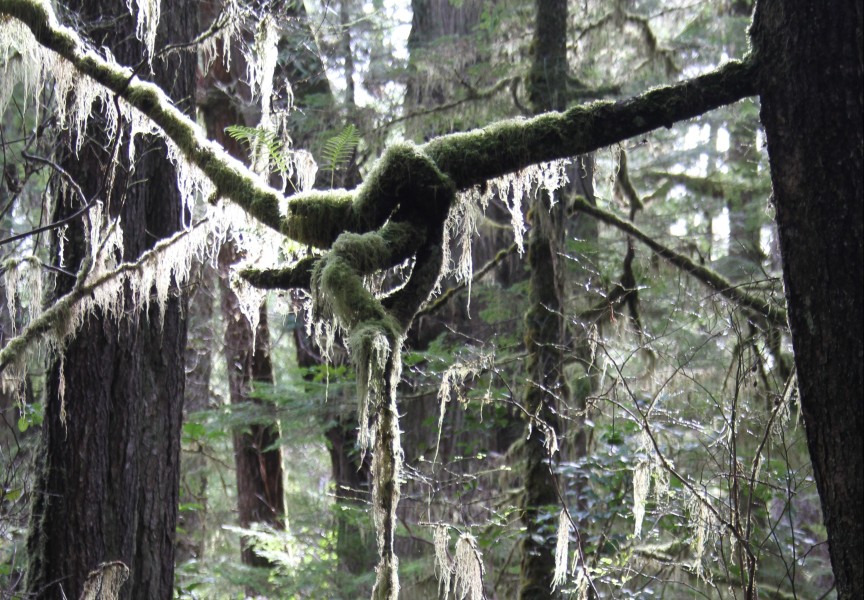The leadership of Ahousaht and Tla-o-qui-aht First Nations have reached tentative land use agreements with the provincial government, which set out both conservation areas and industrial forestry sections in Clayoquot Sound. The province is now entering a public consultation process that began March 12 and is expected to wrap up April 10.
The province, the B.C. Ministry of Forests, Ahousaht and the Tla-o-qui-aht First Nations are proposing to establish 77,000 hectares of new conservancies under the Park Act.
“This is part of long-term planning for the area, which is currently authorized for commercial forestry as part of Tree Farm Licence (TFL) 54, the only TFL in Clayoquot Sound,” says a B.C. government news bulletin.
The province says that, if approved, this would mean that nearly 60 per cent of the current area of TFL 54 would be conserved, with 55,000 hectares remaining within forestry tenures.
TFL 54 is located on the west side of Vancouver Island near Ahousaht, Opitsaht, Tofino and Ucluelet. It includes two distinct regions, the Estevan Coastal Plain and the Vancouver Island Mountains, which comprise the area known as Clayoquot Sound.
Ahousaht say they have released their first Iisaakstał Land Use Vision since 2017.
“The Iisaakstał Land Use Vision defines land and marine use designations in Ahousaht hahoulthee (traditional territories) that align with Ahousaht community cultural, environmental, and economic interests,” stated the First Nation in a media release.
The Maaqutusiis Hahoulthee Stewardship Society (MHSS) say the Iisaakstał Land Use Vision proposes new conservancies in Ahousaht hahoulthee and subsequent new forest licenses for the First Nation.
“This will result in significant economic outcomes for Ahousaht including exclusive management of new forest tenures and recreation areas, developing carbon offset projects, and securing long-term stewardship funding,” MHSS stated in a media release.
A conservancy designation means that the nation may engage in a range of low impact, compatible economic opportunities. Commercial logging, mining and hydroelectric power generation, other than local run-of-the-river projects, are prohibited within conservancies.
According to the Ministry of Forests, further cultural and governance benefits to Ahousaht include securing access to and management of new conservancies.
“Establishing new conservancies in sensitive old growth areas also results in strong biodiversity and climate outcomes by protecting critical habitat and reducing greenhouse gas emissions,” stated the ministry.
Łaašłaaša uuḥw̓ ał hitaqƛas Areas, or Ahousaht Forest Management Areas (AFMA) are forested areas Ahousaht has identified that are suitable for commercial forest restoration, enhancement and development by Ahousaht.
“The management intent for Łaašłaaša uuḥw̓ ał hitaqƛas Areas is to manage the full range of forest resources (timber and non-timber) to generate long-term social and economic benefits and jobs for Ahousaht muschim,” according to MHSS’s land use plan.
Activities in AFMA could include forestry work like restoration, silviculture timber and non-timber harvesting with an emphasis on Ahousaht employment and sustainability. MHSS says they will manage forests according to ecosystem-based principles that meet or exceed Clayoquot Sound Scientific Panel recommendations and Clayoquot Sound Watershed Plans.
Ahousaht has set aside three proposed areas that would be designated AFMA – forested land near Cypre River, Atleo River and Stewardson Inlet. This designates 20,588 hectares of Ahousaht Forest Management Areas, which represents about 12 per cent of their land base.
The Tla-o-qui-aht have posted their land use plan on their Tribal Parks website. It includes a map that is to be merged with Ahousaht’s land use plan, showing the entire proposal for Tree Farm License 54 in Clayoquot Sound.
Tla-o-qui-aht has identified an area west of Kennedy Lake as their forest management area.
“That is our intended wood lot,” said Tla-o-qui-aht Lands and Resources Manager Saya Masso.
They intend to focus their future forestry operations on the second growth forests already growing in that area.
“With a few years working on ‘spacing trees’ in the second growth, and a few years deactivating roads, we hope for a viable second-growth forestry operation in the future,” Masso added.
The environmental group the Ancient Forest Alliance congratulated Ahousaht and Tla-o-qui-aht leadership on a social media post for reaching this milestone.
“Great news! Today, the Ahousaht and the Tla-o-qui-aht First Nation in Clayoquot Sound off western Vancouver Island announced their proposal for a network of protected conservancies, which would include major tracts of some of the finest old-growth forests in B.C., combined with a vision to enhance economic opportunities for their communities,” they wrote.
According to the province, land-use discussions are ongoing with the Ahousaht and Tla-o-qui-aht First Nations, as well as forestry operators, communities and the public. The proposed conservancies would support reconciliation, the conservation of old-growth forests and healthy ecosystems, as well as provide clarity on areas that will continue to be managed for forestry to support timber supply.
To view the proposed land use plans visit www.mhssahousaht.ca and Tla-o-qui-aht Tribal Parks
The public are invited to comment on the proposed land use plans at Engage.gov.bc.ca until April 10, 2024.


